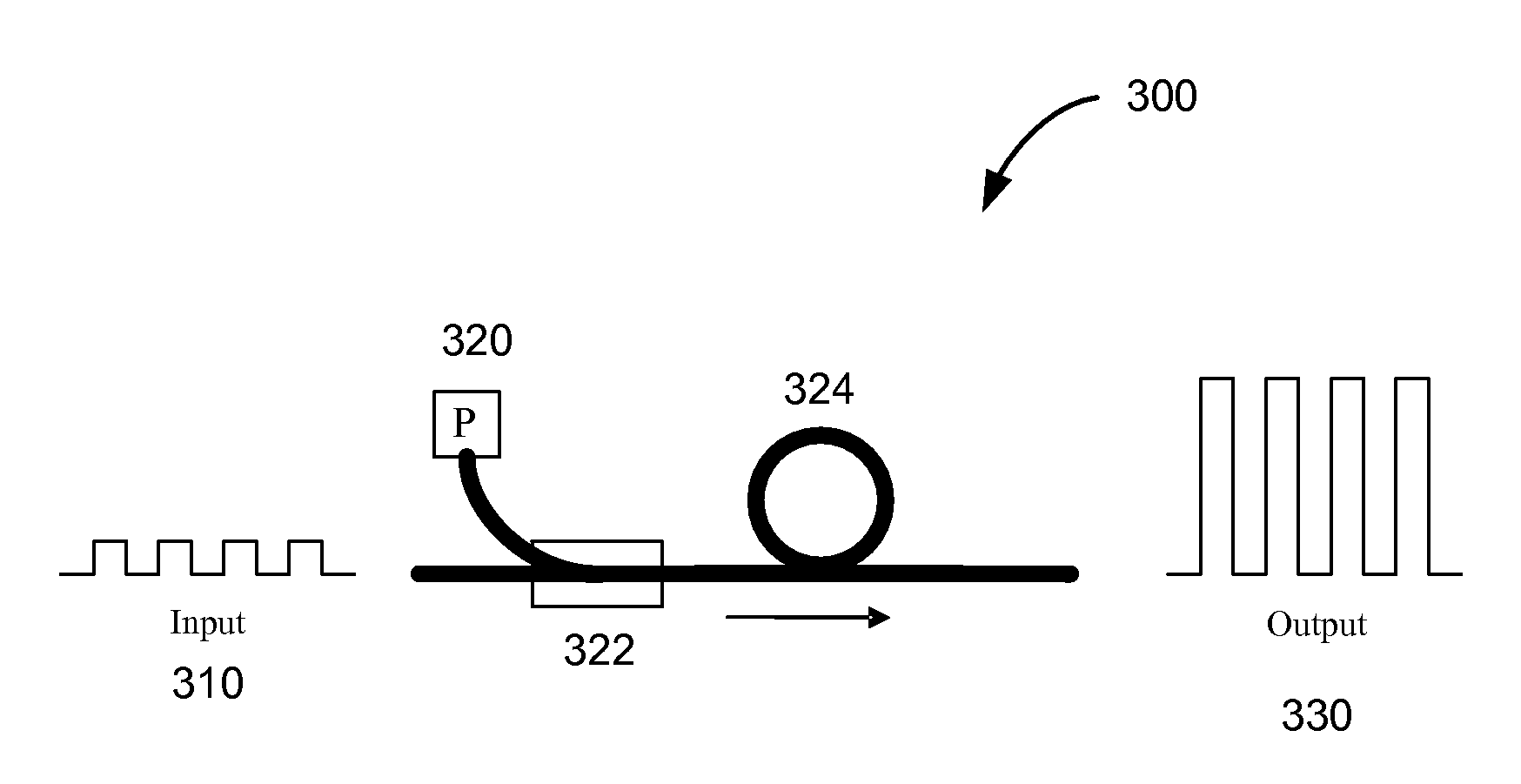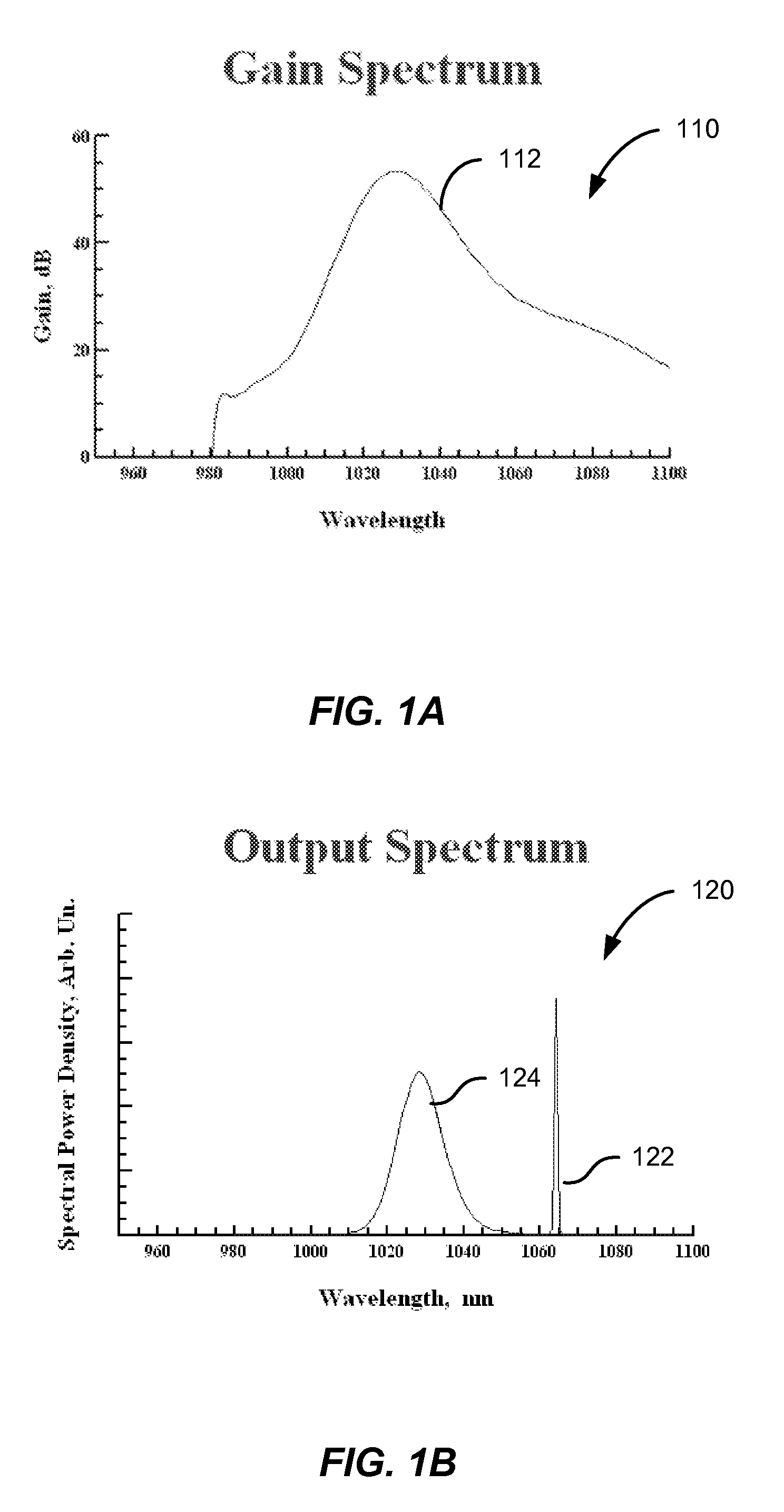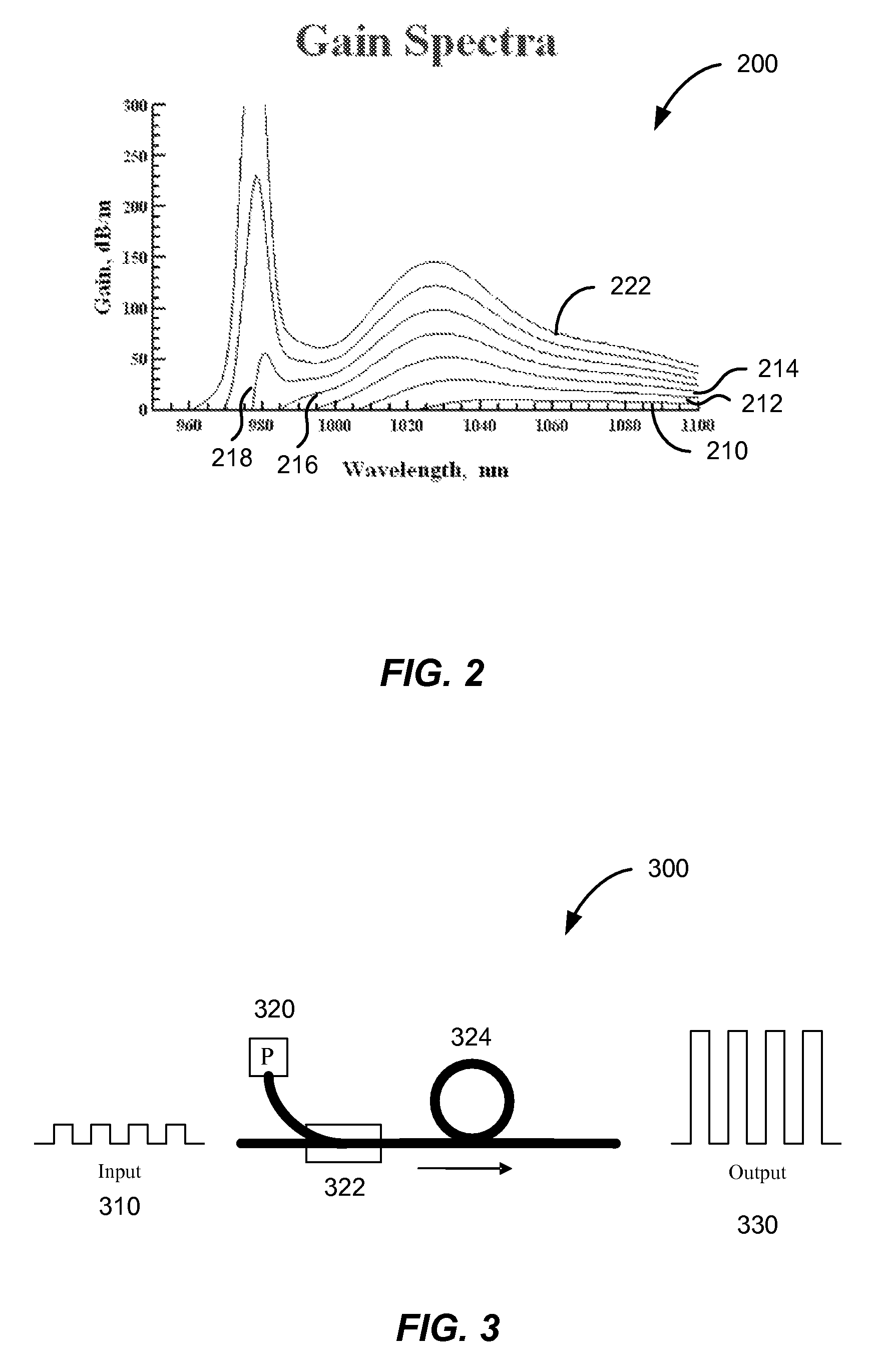Fiber amplifiers and fiber lasers with reduced out-of-band gain
a fiber laser and fiber amplifier technology, applied in the field of optical amplifiers and lasers, can solve the problem of limiting the gain available at the wavelength of interest, and achieve the effect of a wider range of application
- Summary
- Abstract
- Description
- Claims
- Application Information
AI Technical Summary
Benefits of technology
Problems solved by technology
Method used
Image
Examples
Embodiment Construction
[0037]FIG. 1A is a simplified illustration of spectral gain in an ytterbium-doped amplifier optically pumped at 976 nm. To produce the spectral gain curve 110 illustrated in FIG. 1A, an ytterbium-doped optical fiber was core-pumped at a wavelength of 976 nm with 500 mW of pump power. The length of optical fiber was selected to achieve close to 30 dB of gain at 1064 nm. To generate the spectral gain data presented in FIG. 1A, the inversion of the active material was about 47%. A significant portion of the pump light is absorbed during pumping of the ytterbium amplifier.
[0038]Referring to FIG. 1A, a substantial gain peak 112 is present in the spectral gain curve at a wavelength of about 1030 nm. For applications in which either lasing or amplification at a wavelength of 1064 nm is desired, the gain peak 112 at about 1030 nm represents out-of-band gain. In the example illustrated in FIG. 1A, the gain peak 112 is over 50 dB. It will be appreciated that the high value of gain peak 112 ma...
PUM
 Login to View More
Login to View More Abstract
Description
Claims
Application Information
 Login to View More
Login to View More - R&D
- Intellectual Property
- Life Sciences
- Materials
- Tech Scout
- Unparalleled Data Quality
- Higher Quality Content
- 60% Fewer Hallucinations
Browse by: Latest US Patents, China's latest patents, Technical Efficacy Thesaurus, Application Domain, Technology Topic, Popular Technical Reports.
© 2025 PatSnap. All rights reserved.Legal|Privacy policy|Modern Slavery Act Transparency Statement|Sitemap|About US| Contact US: help@patsnap.com



